Introduction to Aesthetic Emojis
In today’s digital world, emojis have become an essential part of communication. They help us express emotions, thoughts, and ideas quickly and effectively, often replacing words with tiny, colorful images. However, not all emojis are created equal. Some of them are designed to convey deep feelings, while others are simply for fun. Aesthetic emojis are in a league of their own. They go beyond simple expression to become artistic symbols that enhance communication in a visually appealing way.
Whether you’re posting on social media, texting friends, or creating digital art, aesthetic emojis add style and flair to your messages. But what exactly makes an emoji “aesthetic”? Is it just the way it looks, or is there something deeper behind the design? In this guide, we’ll explore the fascinating world of aesthetic emojis and how they’ve evolved from simple digital icons to powerful tools of expression to Aesthetic Emojis.

The Origins of Aesthetic Emojis
Before diving into aesthetic emojis, it’s important to understand where they came from. Emojis originated in Japan in the late 1990s. The term “emoji” is derived from two Japanese words: “e”meaning “picture,” and “moji” meaning “character.” These small images were initially created by Shigetaka Kurita, a Japanese designer, to enrich text-based communication on early mobile phones to the Aesthetic Emojis.
The first set of emojis consisted of just 176 simple, pixelated images, ranging from smiley faces to weather symbols. Over the years, as technology advanced, emojis became more sophisticated, evolving into the diverse and intricate icons we use today.
As their popularity spread across the world, emojis began to be incorporated into every aspect of digital life—from social media posts to email signatures, even influencing the way we interact in online gaming and virtual worlds. Today, they serve not only as expressions but also as forms of art, sparking new trends in graphic design and digital communication.
What Makes an Aesthetic Emojis?
So, what makes an emoji “aesthetic”? Aesthetic emojis are those that are designed with a sense of beauty, balance, and style in mind. They go beyond just representing an emotion or object. Instead, they focus on how they look, how they’re perceived, and how they interact with the context in which they are used.
Key elements that make an emoji aesthetic include:
- Color Harmony – The use of colors that complement each other and create a visually pleasing effect.
- Smooth Lines – Rounded, smooth edges often make emojis more pleasant to look at compared to sharp, harsh lines.
- Minimalism – A clean design with fewer elements can sometimes be more striking than an overly detailed emoji.
- Symbolism – Emojis that carry deeper meanings, conveying more than just surface-level emotions or ideas, are often considered more aesthetic.
- Creative Interpretation – Emojis that use unique, unexpected representations to convey feelings or ideas in a way that feels artistic or avant-garde.
In essence, aesthetic emojis can be thought of as the digital equivalent of art, where design, emotion, and function come together in a perfect blend.
The Power of Visual Symbols
Emojis are more than just cute little pictures. They are visual symbols that carry meaning across different cultures and contexts. Just as words can evoke strong emotions, visual symbols can convey feelings instantly without the need for explanation. A smiley face emoji can communicate happiness or friendliness, while a crying face can express sadness or empathy.
What makes these symbols even more interesting is their ability to change based on how they are presented. For example, a heart emoji can range from a simple red heart to a glowing neon design or even a rainbow-colored heart depending on the context. This flexibility is one of the reasons why aesthetic emojis have become so popular.
By using visual symbols in communication, we can connect with others on a deeper level. Emojis help to bridge the gap between cultures, making communication faster, easier, and more emotionally resonant.

Creative Icons in Digital Communication
Every time we send a message, whether it’s a text, email, or social media post, we choose our words carefully. But in today’s digital age, emojis are just as important as words, if not more. Creative icons have taken over the digital communication space, allowing us to express a wide range of emotions, ideas, and even abstract concepts.
For example, consider the use of the fire emoji. At first glance, it may seem like a simple representation of flames, but in digital communication, it can symbolize anything from excitement to passion, even success or energy. It’s an icon with multiple layers of meaning, making it a powerful tool in creative expression.
The beauty of these icons is their versatility. Depending on the context, a single emoji can tell a different story. The more creative and artistic the icon, the greater its impact.
Emojis as Expressive Symbols
In the past, written communication was the only way to express emotions, but with emojis, expressive symbols have taken communication to a whole new level. While words can sometimes feel limited, emojis can convey complex emotions in a split second. A simple smiley face can express happiness, while a crying face may show sadness, but both of these are just the beginning.
Expressive symbols like these go beyond just feeling happy or sad—they capture a wide range of human experiences. Think about emojis like the “heart eyes” or the “star-struck” face. These symbols go beyond mere expression; they also show excitement, infatuation, or admiration. Emojis are evolving into more than just simple text replacements—they’re becoming a universal language that speaks to everyone, no matter where they’re from.
The emotional resonance of these symbols is what makes them so powerful in digital conversations. A single emoji can convey a story, a mood, or even a personal connection between people.
The Rise of Stylized Emojis
As the internet and social media platforms grew, so did the demand for personalization. This led to the rise of stylized emojis, which are unique, custom-designed versions of the standard emojis. Stylized emojis give people the opportunity to add their personal touch to their digital expressions, turning basic icons into something fresh, fun, and distinct.
For instance, stylized emojis might include hand-drawn versions of standard icons or digital art that transforms simple smiley faces into more intricate designs. These emojis are often used on platforms like Instagram or Twitter to stand out from the crowd and attract attention. They give users the freedom to express themselves in a way that feels more in tune with their style, personality, and aesthetic preferences.
Stylized emojis have even made their way into the world of graphic design and branding, where companies use custom emojis to represent their brand identity and communicate with their audience in creative ways.
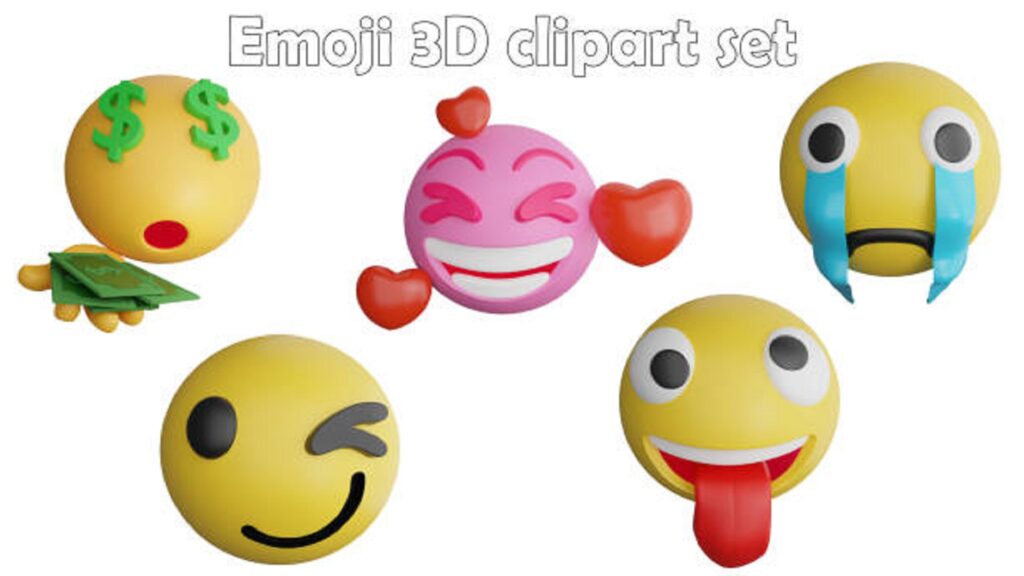
Exploring Digital Aesthetics
In the digital age, everything is designed to appeal to our senses, and digital aesthetics play a major role in how we interact with technology. Emojis are no exception. The way they are designed—whether it’s the choice of colors, shapes, or overall appearance—affects how we perceive and use them.
For example, flat design emojis, which focus on simplicity and clean lines, have become increasingly popular due to their modern and sleek look. On the other hand, some emojis adopt a more 3D, lifelike appearance, giving them a sense of depth and realism. Both of these design approaches can influence how emojis are interpreted. A minimalist emoji may convey subtlety and elegance, while a more detailed emoji might evoke a sense of fun and playfulness.
The field of digital aesthetics also includes the study of how these designs fit into the broader culture of the internet. From meme culture to trends in web design, the visual style of emojis often reflects the changing tastes of online communities. Emojis are not just about function—they are part of the larger visual language of the internet, influencing how we communicate visually.
The Beauty of Decorative Icons
While some emojis are used for basic expression, others are crafted to be decorative icons—eye-catching symbols meant to enhance digital communication with added flair. These types of emojis are often used in creative projects, like digital scrapbooking, social media posts, or even in the creation of visual stories.
Decorative icons are not just for fun; they can help make a digital design feel more cohesive and professional. For example, the use of stars, flowers, or geometric shapes can turn a simple message into an artistic visual experience. They add a layer of texture and depth, transforming the message from plain text to something visually appealing.
Whether it’s a sparkly star to highlight an important point or a cute animal to bring joy to a conversation, decorative emojis help set the tone and elevate the mood. They can make digital content feel more lively, engaging, and personalized.
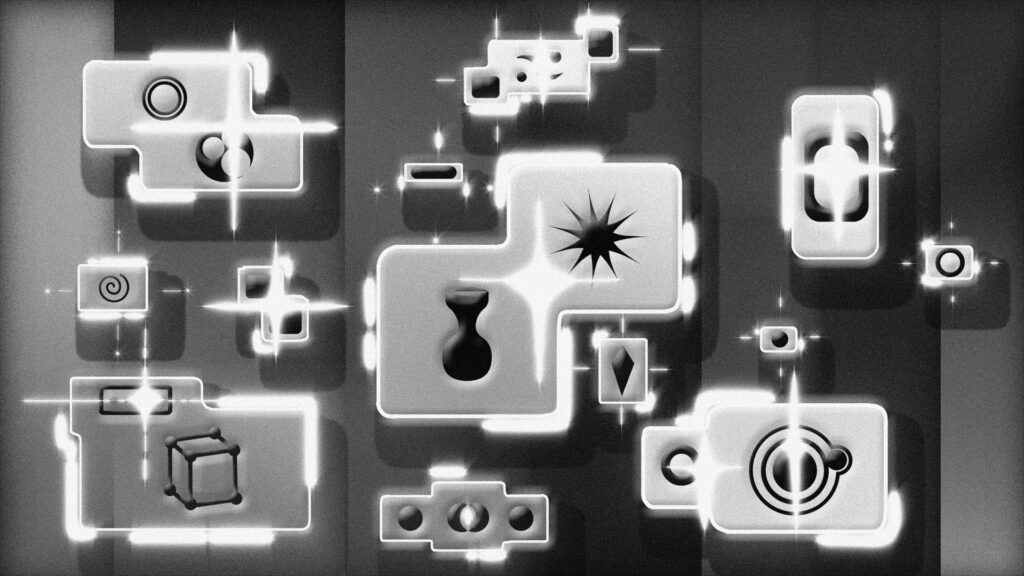
The Evolution of Emoticon Design
Before emojis, there were emoticons—simple text-based symbols used to express emotions. Think of the classic smiley face or the sad face, While these symbols were effective in their time, they were limited by the constraints of text characters. However, as technology progressed, so did the design of emoticons, eventually leading to the creation of the more complex and visually appealing emojis we use today.
The design of emoticons began to evolve with the advent of graphical interfaces and better screen resolutions. What started as basic keyboard characters soon turned into colorful, detailed images that could represent a wider array of emotions and objects. Emojis became more than just symbols—they became part of a cultural shift in how we communicate.
Emoticon design is still relevant today, especially in the world of online gaming and text-based communication platforms like Discord, where users often create custom emoticons. These icons serve as a bridge between old-school text emoticons and modern graphic emojis, combining nostalgia with innovation.
Symbolic Imagery and Hidden Meanings
One of the most intriguing aspects of aesthetic emojis is the way they communicate symbolic imagery—icons that carry hidden or deeper meanings. Emojis can represent ideas that go beyond their surface-level appearance. For example, a simple leaf emoji might not just represent nature or trees—it could symbolize growth, renewal, or even environmentalism, depending on the context.
The symbolic nature of emojis is what makes them such a powerful tool for creative expression. By using carefully chosen emojis, users can convey messages that go beyond words. An emoji like a rainbow can represent diversity, hope, or positivity, while a moon can evoke feelings of calm, mystery, or even romanticism.
Emojis are often used in combination with other emojis to create complex, layered meanings. For instance, combining the sun and the cloud ☁️ emojis might symbolize the idea of “sunshine through the clouds”—a metaphor for overcoming challenges or seeing the light after a difficult time.

Vibrant Icons and Their Impact
A vibrant icon is an emoji that stands out due to its bold colors, dynamic shapes, or eye-catching design. Vibrant emojis are perfect for grabbing attention and making a statement. These emojis are used when you want to add energy, excitement, or emphasis to a message.
Think of the use of the fire 🔥 emoji, often used to symbolize something that’s “on fire” or extremely impressive. The intensity of its red and orange colors makes it impossible to miss. Similarly, a rainbow-colored emoji 🌈 stands out because of its vibrant hues, representing positivity, inclusivity, and joy.
Vibrant icons are commonly used in social media posts, digital art, and advertisements because they add a sense of dynamism and liveliness to the content. By choosing the right vibrant emoji, users can enhance the emotional impact of their message and attract more attention from their audience.

Minimalist Emojis and Their Power
On the other end of the spectrum, we have minimalist emojis, which focus on simplicity and elegance. These emojis are often characterized by clean lines, subtle designs, and a lack of unnecessary detail. The power of minimalist emojis lies in their ability to communicate meaning through minimalism, creating a more sophisticated or serene feeling.
For example, the use of a simple, neutral-colored heart ❤️ or a single leaf 🍃 can communicate warmth, affection, or nature in a subtle, refined way. Minimalist emojis are often favored by those who prefer understated designs or those who want to convey meaning in a more restrained manner.
In design, minimalism is often used to evoke calmness, balance, and clarity. Minimalist emojis achieve this by focusing on the essentials—removing any distractions or excess detail—so that the core message stands out.
Emotional Expression Through Emojis
Emojis have revolutionized the way we communicate emotions. Unlike traditional text-based communication, emojis allow us to express emotions more vividly and accurately. A simple smiley face can brighten someone’s day, while a frown can instantly convey sadness. Emojis give users the ability to express feelings with just a tap of a finger.
But emotional expression through emojis goes deeper than just surface-level happiness or sadness. Emojis can convey a wide spectrum of emotions, from joy and excitement to frustration, surprise, and even sarcasm. The beauty of emojis is that they transcend language barriers—someone from any part of the world can instantly recognize the meaning of a smiling face or a thumbs-up.
This emotional immediacy is why emojis have become so widely used in everything from text messaging to digital art. They provide a quick, easy way to connect with others on a personal level, making digital communication feel more human and relatable.
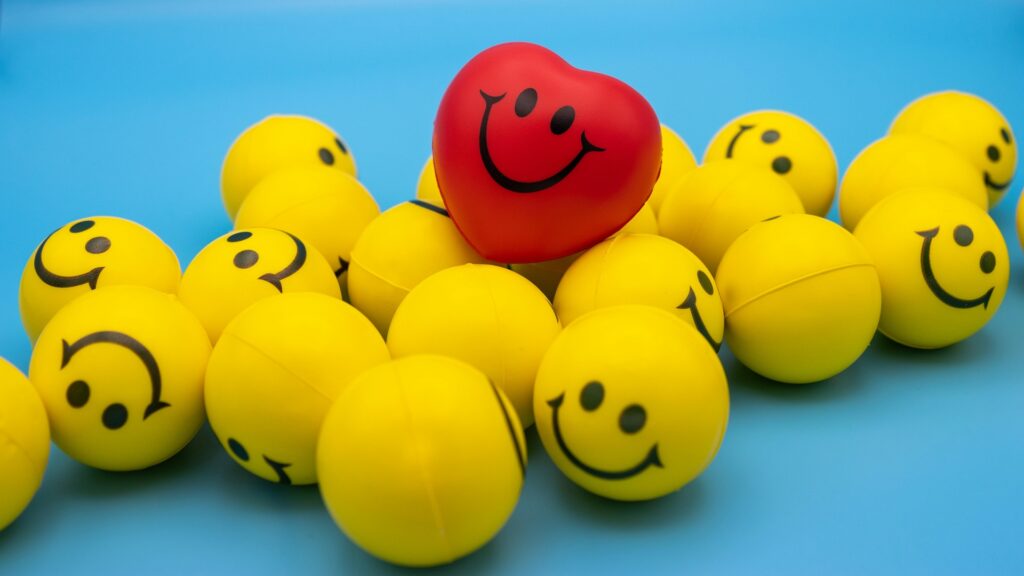
Emojis in Social Media and Trends
Social media is where emojis truly shine. With millions of users posting content every day, the need for creative expression is more important than ever. Emojis in social media help convey emotions, add personality to posts, and even create visual trends that spread across platforms.
In platforms like Instagram and Twitter, emojis are often used in hashtags, captions, and comments to add flavor to the text. For example, the use of a heart ❤️ or fire 🔥 emoji can quickly communicate the sentiment behind a post, whether it’s love, passion, or enthusiasm. Emojis are also used to create visual trends, such as the “sparkles” ✨ emoji being used to indicate something magical or special.
Emojis have even influenced social media marketing, where companies and influencers use them to create visually appealing content that stands out. Whether it’s adding a smiley face to a positive tweet or using multiple heart emojis in a promotional post, the use of emojis helps content feel more engaging and personal.
Emojis in Digital Art and Design
The world of digital art has been greatly influenced by the use of emojis. Artists have taken the basic structure of emojis and transformed them into intricate works of art. Emojis can now be seen in everything from digital paintings to animations, advertisements, and even virtual reality experiences. Their simple and iconic design makes them the perfect canvas for artistic experimentation.
Artists can play with color, texture, and scale, turning emojis into bold, thought-provoking pieces of art. Some artists reimagine emojis in surreal or abstract ways, making them more expressive and visually striking. Others mix emojis with typography or other design elements to create new forms of digital storytelling.
Emojis have also become a cultural reference point in digital art. The use of emojis can evoke specific emotions, ideas, and experiences, allowing artists to connect with their audience on a deeper level.
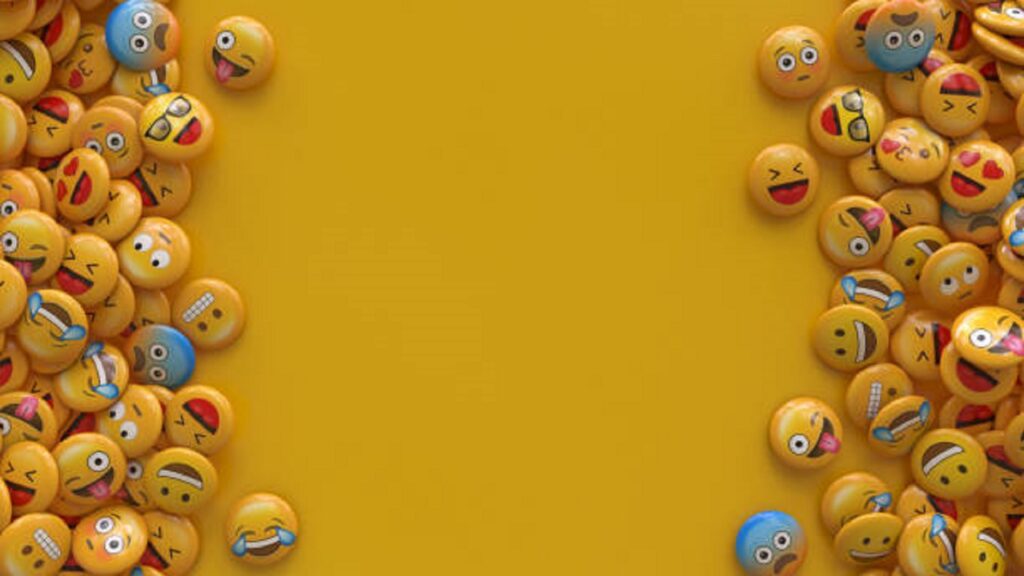
Emojis in Personal Branding
With the rise of social media influencers and online personalities, emojis in personal branding have become an important tool for self-expression and communication. Influencers, content creators, and even businesses now use emojis as part of their visual identity. Emojis help convey personality, tone, and style, making it easier to connect with audiences in an authentic way.
For instance, a fitness influencer might use a dumbbell emoji 💪 to symbolize strength or health, while a travel blogger could incorporate a suitcase emoji 🧳 or an airplane emoji ✈️ to represent wanderlust. These emojis become part of their brand’s identity, helping their followers immediately recognize and relate to their content.
The use of emojis in personal branding also helps create a consistent visual language that resonates with the target audience. By choosing emojis that reflect their values, interests, or niche, creators can further establish their presence in the crowded world of online media.
Custom Emojis and Their Role in Communication
In the world of digital communication, custom emojis are becoming increasingly popular. Platforms like Slack, Discord, and Telegram allow users to create and share personalized emojis that reflect their unique personalities, interests, or inside jokes. These custom emojis often become part of the culture of specific communities, allowing users to express themselves in ways that standard emojis cannot.
Creating custom emojis allows users to have more control over their digital expression. For example, you could make a custom emoji of your pet or create an emoji that represents an inside joke within your friend group. Custom emojis make conversations feel more personal and playful, helping to strengthen connections between people.

The Future of Aesthetic Emojis
As technology continues to advance, the future of aesthetic emojis looks incredibly exciting. With the rise of augmented reality (AR) and virtual reality (VR), it’s possible that emojis will evolve beyond static images into interactive, 3D icons. Imagine being able to “place” an emoji in a virtual space or use it in an augmented reality setting.
Another exciting development is the use of motion emojis. These animated emojis will add another layer of expression, allowing users to convey emotions or actions in even more dynamic ways. For instance, a dancing emoji or an emoji with changing facial expressions could bring a new level of excitement and depth to communication.
Furthermore, the world of AI-generated emojis may lead to even more personalized emoji designs. With machine learning, we could see emojis that adapt to individual preferences, learning from the user’s interactions to create a more tailored experience.
In the coming years, it’s likely that aesthetic emojis will continue to grow, both in design complexity and emotional expression, making them an even more important part of our digital language.
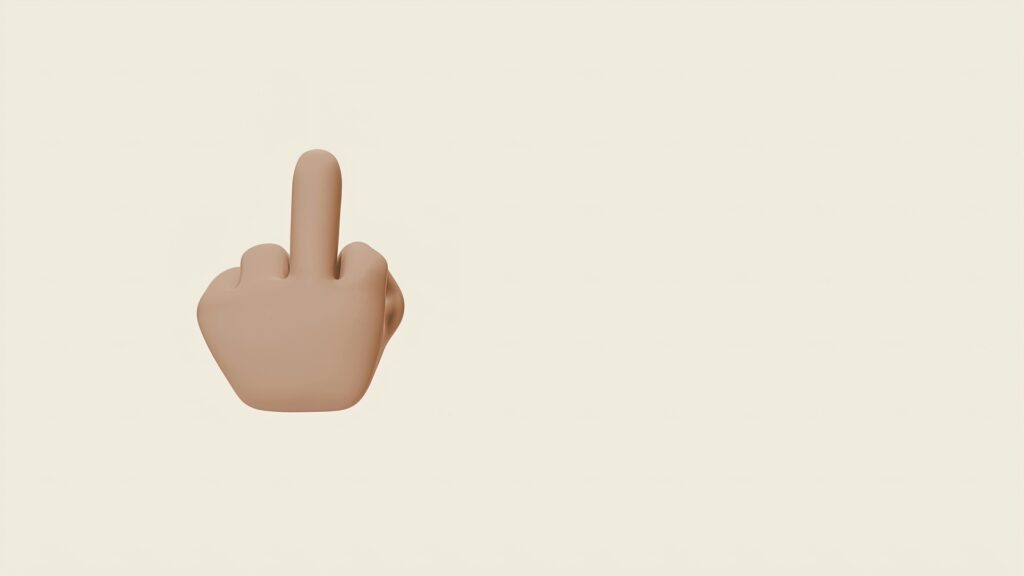
How to Create Your Own Aesthetic Emojis
If you’ve ever wanted to try your hand at designing your own aesthetic emojis, now is the perfect time! With a variety of apps and tools available, creating custom emojis is easier than ever before. Here are some simple steps to get started:
- Choose Your Design Style – Think about what kind of aesthetic you want your emoji to have. Will it be minimalist, colorful, or maybe even retro? Decide whether you want it to be simple or detailed.
- Select a Tool – You can use design tools like Adobe Illustrator. Canva, or even apps like Bitmoji or Moji Maker to create your emojis. These tools offer templates and customization options to help you bring your ideas to life.
- Keep It Simple – Emojis are usually small in size, so avoid too much detail. Focus on clear shapes, bold lines, and vibrant colors that will stand out even at a small scale.
- Think About Meaning – Emojis are often used to express emotions. So think about what feeling or message you want your emoji to convey. Whether it’s happiness, love, or something quirky, make sure your design communicates that effectively.
- Share Your Creations – Once you’ve created your emoji. Share it with friends or use it in your personal messages and social media posts. You might even create a collection of custom emojis for specific themes or occasions.
Emojis in Pop Culture
Emojis have not only transformed digital communication, but they’ve also made a massive impact on pop culture. In recent years, emojis have appeared in music videos, movies, merchandise, and even in mainstream advertising campaigns. Their universal appeal has made them a pop culture icon.
For example, in 2017, the emoji movie was released, a full-length animated film centered around emojis in a digital world. This marked one of the most direct incorporations of emojis into mainstream media. It shows how emojis have transcended their original purpose of communication and become a part of the global cultural lexicon.
Emojis are also used by celebrities, musicians, and brands in their social media campaigns. From emoji-based hashtags to the use of emojis in music album covers. They continue to play an important role in shaping modern culture. The widespread use of emojis in pop culture reflects just how deeply ingrained they have become in our daily lives . And how they have evolved into a form of visual language understood across the globe.

Emojis and Their Cultural Significance
Emojis are not only a universal language but also hold cultural significance in various regions and communities. Depending on where you are in the world, certain emojis can carry different meanings or be used in unique ways.
For instance, the thumbs-up emoji 👍, while universally recognized, may have a different connotation in certain cultures. In some countries, it’s a sign of approval, but in others, it can be considered rude or dismissive. Similarly, the “OK” hand gesture emoji 👌 might be a positive symbol in one culture. But in another, it could have offensive connotations.
The global nature of emojis makes it essential to understand their cultural context. Emojis are evolving symbols that reflect diverse beliefs, traditions, and values. As digital communication becomes more globalized. It’s important to recognize the impact emojis can have on shaping perceptions and fostering connections across cultural boundaries.
Emojis in Language and Linguistics
Emojis have also made their way into the study of language and linguistics. Researchers are exploring how emojis influence written language, especially in digital communication. Are emojis a form of visual language, or are they simply an enhancement to text?
Some linguists argue that emojis are a new form of pictorial language—a way of combining images and words to create meaning. While emojis are often used to complement text. They also have the power to stand alone, creating their own linguistic context. For example, the use of a “thumbs-up” emoji 👍 at the end of a sentence can change the tone. Making it sound more friendly and affirming.
Moreover, emojis have given rise to a new genre of emoji-based storytelling. Social media users often share stories or messages using only emojis. Challenging the traditional structure of language and pushing the boundaries of communication. In some cases, people even create entire sentences or narratives using only emojis. Highlighting their potential as a creative and expressive language tool.

Emojis and Mental Health
Emojis have even been linked to mental health and well-being. Studies have shown that the use of certain emojis can impact mood and emotional expression. Emojis help people express feelings they might otherwise struggle to communicate through text alone.
For individuals who have difficulty expressing emotions, emojis provide a safe, non-verbal way to share their feelings. Emojis like the “heart” ❤️ or “hug” 🤗 emoji can convey support, love, and empathy. In online communities or therapy groups, emojis can help create an environment of emotional connection and solidarity.
However, the overuse of emojis or the misinterpretation of emoji meanings can sometimes have negative effects. For example, relying too heavily on emojis for communication may hinder the development of verbal or written communication skills. It’s important to balance emoji use with traditional forms of expression to ensure that emotions are being communicated effectively.
Conclusion – Emojis and Their Lasting Legacy
In conclusion, aesthetic emojis have come a long way since their humble beginnings. From being simple, text-based characters to evolving into a sophisticated form of visual communication, emojis have revolutionized the way we connect with others in the digital age.
Emojis have become an essential part of online communication, enriching our conversations, adding emotional depth, and making interactions more engaging and personal. Whether they’re expressive symbols, decorative icons, or minimalist designs, emojis offer endless possibilities for creative expression.
As technology continues to advance, the world of emojis will only continue to evolve. From custom designs to motion graphics, the future of emojis is exciting and full of potential. So, the next time you send an emoji, take a moment to appreciate the way these tiny symbols have changed the way we communicate and express ourselves in a world that is increasingly digital.


